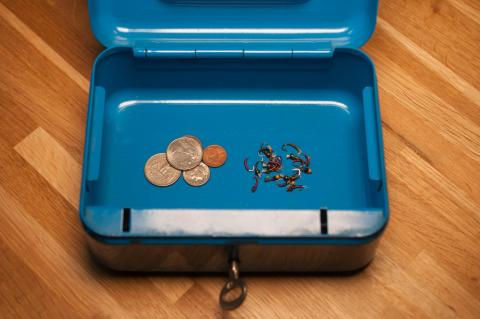Recent comments
Jim’s Black Nose Dace video is “Not available.” Please restore this excellent video, so it can be viewed. I left a note about it for Jim on his YouTube site in the replies to one of his videos but don’t know if he will see it there or be able to fix it here. -Bob
- Log in to post comments
It's really about the the fish! Anyone fishing partner who couples the "rod balance" with the "fish thrust" (pushing the fish much closer to the camera for size distortion) for the sake of self-enhancement or Instagram gets dunked at my hand :) .
It's simple; if you're not proud of, and appreciate the beauty of, your catch, don't take a picture.
- Log in to post comments
Nemo,
You can experiment with the fly size and weight, but do give the larger and heavier flies a try. It might not be as bad as you think.
Regarding the sea trout flies, I know for sure that a lot of them will work for brown trout. Anywhere where you might consider fishing a Wooly Bugger or a streamer, I'm sure a lot of the Baltic sea trout flies will do fine. I have used quite a few of them in a classic wet fly swing down and across on streams, and have had success. Quite a few of them are actually inspired by classic wet flies, various streamers and Woolly Bugger style flies, originally tied for brown trout.
Martin
- Log in to post comments
Thanks Martin. The rod is a Guideline Elevation 9' 5wt (rated for 11 grams to 13 grams heads, so obviously more a 6wt and some)
I think I'll downsize a little to size 8 to 6 hook with a plastic head and composite material instead of rabbit pelt.
I've found this very interesting video: https://youtu.be/1ovxdURdcP8
It should be both light and big enough. If I need to go deeper I'll switch to another sinking head combination...
The sea trout fly patterns on GlobalFlyFisher are really nice too, but I don't know if they would work for river brown trout...?
- Log in to post comments
Nemo,
It's a heavy fly, but doing an underhand cast with a heavy fly shouldn't be a problem. You can't really do any harm to your equipment, and the only problem can be that it's difficult to lift the fly out of the water and propel it out. Heavy flies on a 5/6 weight can be a challenge. But a lot of people cast very heavy flies on fairly light gear - like those using the Skagit style of lines and casting techniques. It's not necessarily elegant, but it works.
You may find that the fly is too heavy for comfort, and of course a rod in a higher class and a line that follows in weight might then be a solution.
Martin
- Log in to post comments
Hi Pasi:
Great looking pattern. I've seen dozens of these coming off my home waters. Thanks for the article and photos. I'll be tying up some of these for February
Thanks again
Linc Haverstraw NY USA
- Log in to post comments
Great article.., Is it that most fish are caught 50ft and less because most don't cast that far anyway so it's obvious that this happens! If you cast 75ft the you only have 35ft to catch the fish and 50ft left to catch a fish. So the law of averages comes into play. So the statement can be quite misleading. Never the less most of my fish have been caught within 30ft and I believe they have followed the fly in.
Thanks everyone for your really interesting comments.
Regards
Chris
- Log in to post comments
Jim,
You can read a bit about the origin of the pattern here:
https://globalflyfisher.com/streamers365/73-2013-magog-smelt-variant
Martin
- Log in to post comments
Thank you Martin
Thank you Andrea
Well done. Very well done
Thanks again
Linc
- Log in to post comments
I prefer the Old rods. Like a Old Song they have memories of
Great days on the water. With both Old and modern flylines they Can be a lot more enjoyable to fish.
Tight Lines
Niels
- Log in to post comments
Noé,
As you may know I have been using a small raft for my fishing the last many years because of my inability to walk and keep my balance due to MS. Like you I have focused on inflatable boats that can pack down small enough to fit a trunk. My choice has been smaller pontoon style boats, and they have done the job and been very practical and easy to handle. My main problem has been rust since I fish mainly saltwater.
I have no specific experience with the craft in your link, but judging from the price, I'd guess that it's a quality product. Even for a boat this size, it's not cheap, even though the price is of course significantly lower than many "real" boats. My experience with larger inflatable boats is that size matters, in particular if you are two or three people in the boat. It doesn't take much movement or commotion to create instability, and a larger boat usually feels a lot safer than a smaller one.
The boat in your link seems quite narrow, but it's obvious from the images that they are three people onboard, and two are even standing, so it must be quite stable.
I would recommend trying one out if at all possible before buying. This will allow you to judge quality and stability and maybe trying to unpack and inflate and deflate and packing it down afterwards, which can be quite a job, even with a smaller boat.
I hope this helps.
Martin
- Log in to post comments
Noe,
I can see why you're confused. Zandri Terenzio's technique and tools are pretty exotic, but the result is quite amazing.
I watched the video too, and looked at the pictures in your link, and all I can see from this is that there are three "core threads" - two which form the base on which things are tied ("standing threads"), and one which is used to secure the various materials, and also brilliantly forms the segments in the abdomen of the fly.
Judging from the speed and the hand movements, it seems that the tier is using simple half hitches around a single or both of the standing threads depending on the step. This seems to be the case in all steps involving the third thread or the yarn for the abdomen, but it's hard to see on the fuzzy video.
In the images in the article showing the tying of the abdomen, you can see that the yarn is tied around one, then the other thread using half hitches and a weaving technique not unlike crocheting. After each two knots have been tied, the third thread is used to secure the segment with a couple of similar knots that will hide in the gap between the segments. In the video it seems that the third thread is dark, and this accents the light body yarn nicely to form a clear segmentation. The final wraps holding the tail are simple overhand wraps, finished with a whip finish, but done with a loop tool drawing the tag under the wraps.
It's a very fascinating technique, and one I will look into. Maybe it would be worth doing an article on it, and perhaps a clearer video. I'll see.
Martin
- Log in to post comments
If you steam the untrimmed bug over a small pot of boiling water, or the spout of a teapot, the deer hair will stand up erect. This makes the trimming a bit easier and delivers a tidier result.
- Log in to post comments
No reason to "play" that fish for over 20 minutes in open water and little current. Keeping that tip up puts no pressure on his swimming muscles. Side pressure would have whupped him in less than 5 minutes. That's the difference between playing a fish and fighting one.
- Log in to post comments
Merrimack River Flies is a local fly shop that carries flat wing sand eels that work great. There are always sand eels in the Merrimack and everyone should have some imitations in their fly box. www.mmrf.us.com
- Log in to post comments
I first scored the wood with a chisel and then used a wood file of the appropriate size. I finished it (for cosmetic reasons) with sanding paper wrapped around a small piece of wood.
- Log in to post comments
Thanks for a great article! How did you create the lengthwise groove on the frame?
- Log in to post comments
Something is missing in the description of materials and components of fly
- Log in to post comments

